Drawings by Attar Martinez Ismailova.
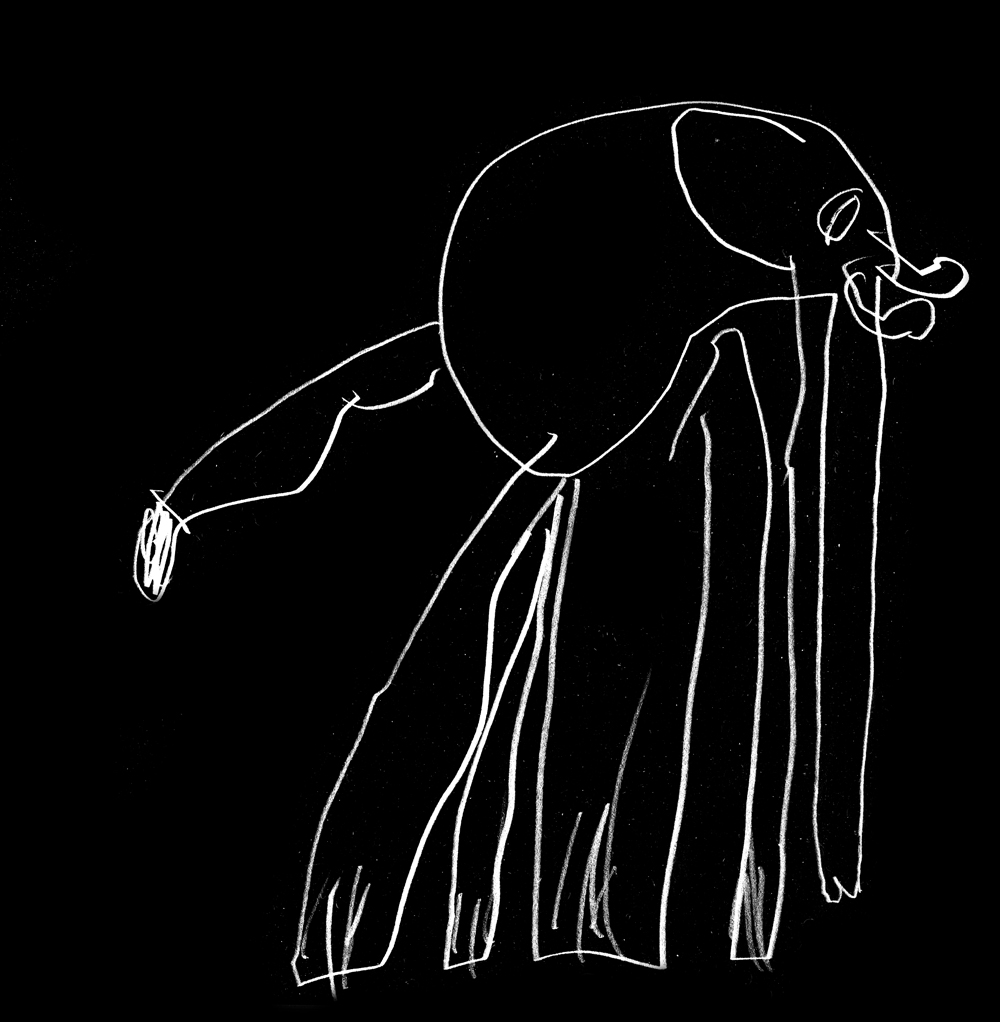
Listening range: 16 to 12,000 Hz
Vision wavelength: 380 to 720 μm
Dichromatic vision
Elephants emit rumbles, trumpets, squeals, and screams. Rumbles are produced for long-distance communication and cover a broad range of frequencies, mostly below human hearing. Infrasonic rumbles travel vast distances. Other sounds include contact calls (emitted by adult females when separated from their group), contact answers (responses to the contact call), “Let’s go” rumbles (emitted by the matriarch to signal a departure), musth rumbles (emitted by musth males); female chorus (modulated chorus produced by cows); postcopulatory calls (made by an oestrous cow after mating); mating pandemonium (made by a cow’s family after she has mated).
I haven’t spoken in three years. To anyone. Three years that words are formulated inside my head and must be arranged, they must find a way to live, abandoned, forming hailstorms or galaxies, inside the skull, the infinite sponge, the dense darkness inside the skull. I have a dead mouth, it’s a dry well with smooth, unexplored depths. My mouth leads nowhere. Communicates nothing. I eat and it’s like I’m mashing mountains. I drink the wild river bed. I think a lot. I have thoughts born in other lives that I don’t know how to reach.
I am not sick. I have thoughts of undergrowth, mistletoe passion, quagmire unease. Three years of not speaking has made me pregnant with silence. And there’s something alive, here with me. An animal. One cannot remain silent with impunity. Everything that is thought and not said casts a shadow. It becomes real. The shadow is desire, a seed. In the natural silence, the shadow now chews the violence of everything I make and don’t utter. The shadow has been growing for three years, next to me, in this room. It’s so big it almost does not fit. I spend my days lying down in the shadow of the shadow. When the sun reaches its climax, when pain makes it transparent because the force that cannot overcome it almost dismembers it, when rivers boil and beasts and plants fall one by one, then, in that little daily death, the shadow spreads its ears and fans me. My shadow is held up by four legs, like a temple. At night, it is a belly containing everything needed to create a real world: evil, which comes in every shape, and good, which is shapeless because it is one. I sleep on the immense belly while the trunk of the great shadow washes me. Water in time. Water in time. Sound is soft above the belly full of fragments and the world. The water makes me even softer. My flesh opens up during sleep to absorb the dent’s shadow. I am a skin where the shadow tempts its dent. At night, all night, the shadow tries its dent inside me, until the dent emerges white and becomes light. Then, the shadow’s two little eyes, the witnessing eyes of God, from where the light emerges, read like fingers the frieze that has appeared, very long, on the tooth.
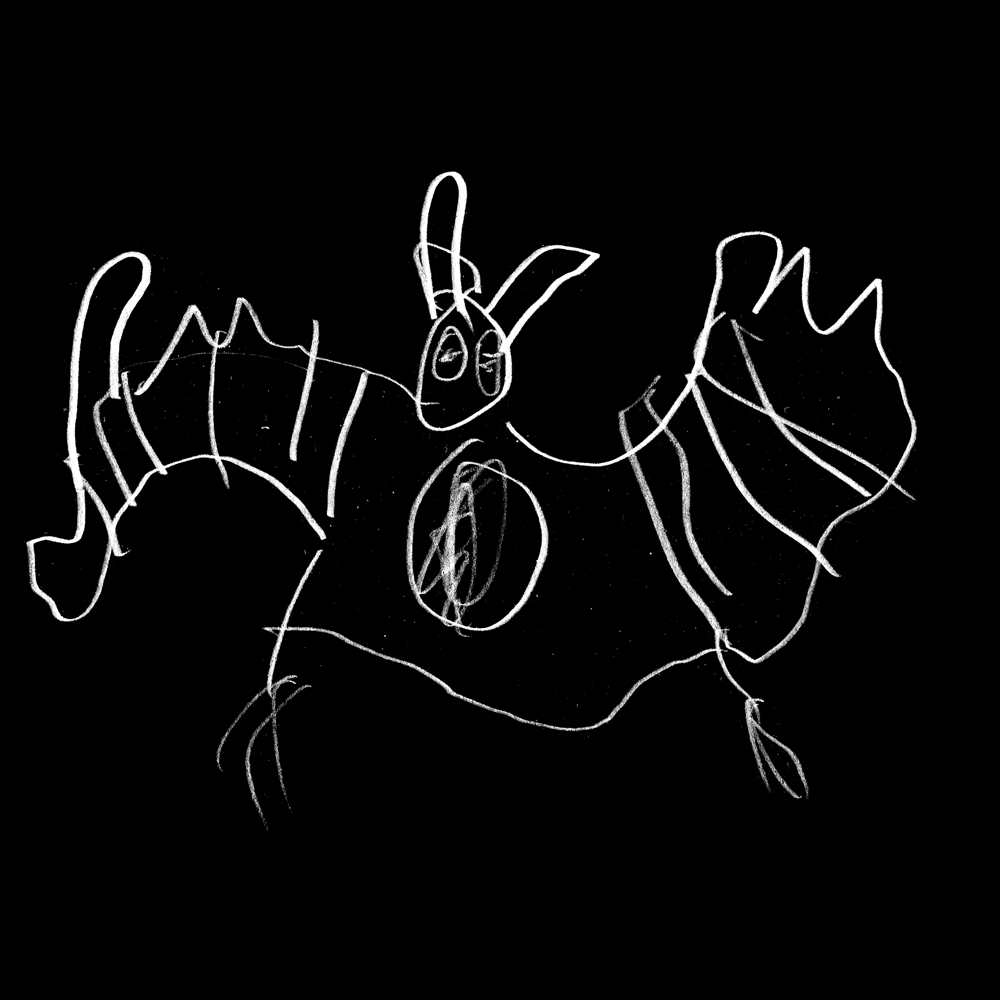
Listening range: 3.7 to 104 kHz
Echolocation Frequency: 45 to 50 kHz
Vision wavelength: 365 to 510 μm
Dichromatic colour vision and UV vision
Bats are the largest group of mammals in Catalunya, with 30 species inhabiting the roofs and caves of its territory. All bat species in Catalunya are protected and more than half are classified as endangered or vulnerable. Bats are not blind but their hearing matters more than their sight. Their echolocation is highly plastic and variable so it can easily adapt to different landscapes and environments. It usually consists of modulated-quasi-constant frequency calls between 41-48 kHz.
It is almost impossible to think of bats as bats. With my eyes half-closed as I try to stay awake through a TV documentary, hazy images of these furry, chittering creatures blend with the creeping silhouette of F. W. Murnau’s Nosferatu and my three-year-old son’s cape-clad Batman impersonation, his scratches still tender on my cheeks.
Their ambiguity makes bats the object of fear and fascination. Bats are mostly inaudible to us, yet they make sounds so loud they must cover their own ears. They are “blind” creatures with the most precise night vision; birds that are not birds, but flying mammals, hence their Catalan name rata pinyada, or “winged rat”. Despite their notoriety as evil omens in Catalan folklore, they used to crown the coats of arms of major Mediterranean cities in the former Kingdom of Aragon. To this day, cast-iron bats preside over Barcelona’s most emblematic modernist markets: a relic of the late-nineteenth century revival of the medieval bestiary, as well as of age-old desires to master the forces of darkness.
It is for this reason that bats’ so-called “sixth sense”—their capacity to “see” in the dark—has been keenly coveted. Although, in fact, it took centuries for scientists to accept that it is primarily their sense of hearing, rather than sight, that enables bats to navigate darkness.
It was only against the backdrop of post-war military investment in communication technologies, when microphones were finally able to capture bats’ high-pitched calls, that we, humans, came to know about their acoustic orientation. This required scientists to come to understand listening as an active practice, not a passive one, for bats don’t simply listen to the vibrations of the objects around them; they emit click-like sounds at various rhythms and intensities to produce acoustic images of their surroundings, based on the echoes that return to them. To truly “see” bats, we too had to think acoustically.
Listening in the dark, of course, is not a practice that is exclusive to bats. Even early studies on bats’ echolocation compare it to the capacity of blind people to perceive obstacles at a distance by using the senses of touch, hearing and smell simultaneously. But we might also think about how listening is heightened under conditions of confinement, when prisoners are forcibly and systematically kept in the dark—the thudding steps resounding in the distance, or the rattling sound of keys turning, their only connection to the world beyond the cell. Art has often tried to tap into an expanded sensorium in less trying conditions, triggering senses long atrophied by our overreliance on vision, to encourage us to move beyond normalised ways of being and feeling. Though perhaps it is art’s capacity to listen to the darkness that so terrifies us—to compel us to orient ourselves, bat-like, within it, rather than triumph over it— that remains its most enduring promise.
* I borrow the title from Donald R. Griffin, Listening in the Dark: The Acoustic Orientation of Bats & Men (New Haven, CT: Yale University Press, 1958).
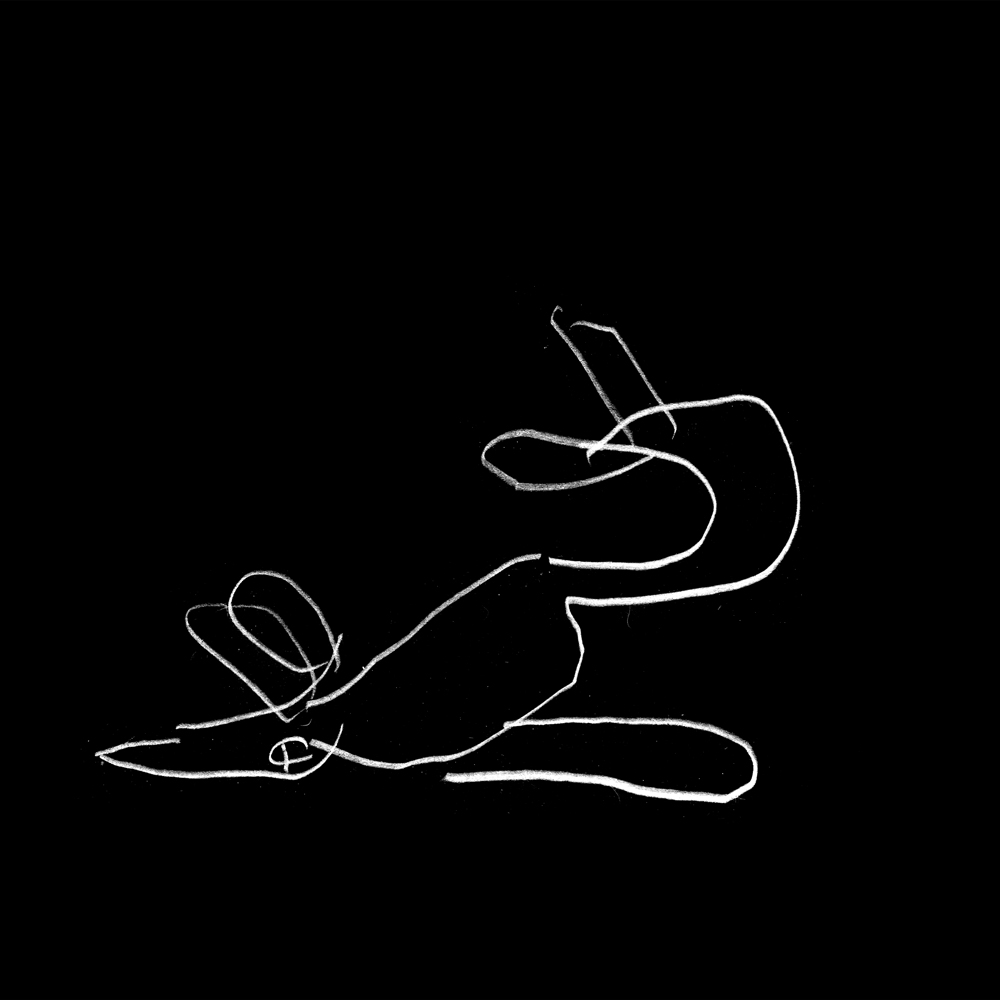
Listening range: 2 to 200,000 Hz
Vision wavelength: 528 to 488 μm
L-cone monochromacy
Sound is a key sense for dolphins and other cetaceans, which they use not only to communicate among themselves but also to orient themselves through echolocation. They produce high-frequency clicking sound through their melon, a fatty mass in their forehead, whose echoes allow them to detect far-away presences and objects, whose shape, size, speed and direction they can identify as far away as 90 metres. It is believed that dolphins have signature whistles and dialects. Dolphins have little colour sensibility, responding to brightness rather than colour.
The first time I saw dolphins was in Barcelona. I was four and a half years old. I know this with certainty because we moved to the city from our remote village on the far coast of Spain in January, a month before my birthday. A person working with my father in the harbor mentioned to him that there was a dolphin show worth seeing. My mother had a very hard time adapting to the city and my father thought that some light entertainment with animals would cheer her up. Back then he was very busy introducing the use of new tugboats and couldn’t join. He bought the tickets—she was very shy speaking Spanish (our mother tongue is similar to Portuguese)—and my mother and I went in. Animal shows were very common at the time and all through America and Europe, bottlenose dolphins were trained to dance and jump in front of hundreds of people. As soon as these wonderful animals started following the commands of the trainers and performing, my mother started to cry. It was a glorious spring day and the world seemed harmonious to many at that moment, but not to my mother. At first, big, noiseless tears were rolling down her face, but after some time the sobs were impossible not ignore. I was frozen and didn’t dare to say a word. People sitting nearby asked her in Catalan if they could help; not only did she not understand, but she was also possessed by a radical shyness and would never answer to strangers. We stayed until the very end; she crying rivers and me staring at the floor of that amphitheater. We went home by taxi and she locked herself in her room. When my father arrived I could hear her yelling at him, “You wanted me to see the dolphins so that I can get a glimpse of my new life here?! This is what the city is making of me and these poor dolphins!! Confined in these miserable spaces jumping around!!!” For years I couldn’t see an image of a dolphin without thinking of this incident. Only decades later, some four or so years ago, another image replaced this one. While on a research trip in the Solomon Islands, returning on a zodiac to the main ship, a marine biologist friend of mine saw a group of dolphins coming in full speed towards us. I did not realize what was happening until the zodiac slowed down and we all felt as if we were on top of a gigantic cloud of dolphins. Without thinking twice my friend disappeared into the blue beautiful water. The rest of us were hypnotized by the presence of dozens, perhaps hundreds, of these animals so very close to us. We were like children practically climbing over one another watching a clown show. We thought the zodiac was going to be tipped over, but they were careful enough not to, even if they could also not control their excitement. A thought crossed my mind in that moment: they may cry tonight thinking of us.
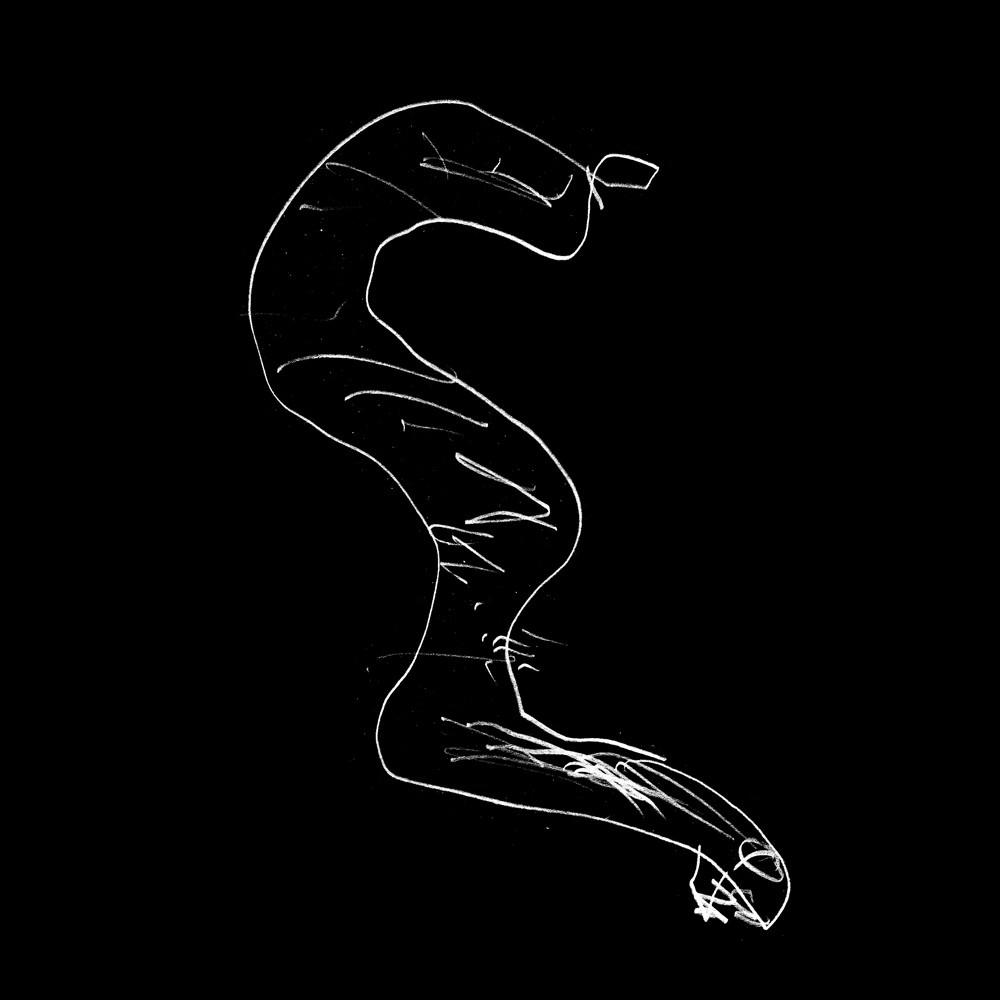
Listening range: 50 to 1000 Hz
Vision wavelength: 5 to 30 μm
Infrared vision
Snakes, like the lataste’s viper, do not have an external ear nor a tympanus, but they share the various parts of the inner ear with humans. Their stapes, a thin bone called columella, is connected to the jawbone, enabling them to sense vibrations on the ground.
Most children start with it. It’s how they learn it, in English, Italian, French, Catalan, many other languages. The letter S is in the shape of a snake, and the snake leaves a shape in the sand and the shape is a snake and an S—so then of course the word snake starts with the letter S. And of course then, when it moves, this is what it ssssounds like, because a snake is made of S and what it leaves behind is made of S; and everything that is snakey and sneaky or serpentine and sibilant is so because it is made of snake and because the snake is made of it. I’ve never much cared about words for their own sake. It’s a typical allergy caused by being literature graduate, that when someone now says “of course, it’s all about language,” I tend to wince a little. Compare the crystalline clarity, the muscular solidity, the erotic abundance of the slithering beast itself, with the way words scuttle about aimlessly, grotesquely, tethered, these days, to almost nothing.
We don’t remember this often, especially as we type, but every word was once a thing of this world, and may still be: a physical trace, carved by a solid thing, onto the surface of a softer, more welcoming thing. In geology: in the meeting of two rocks, one will always pulverize the other. Similarly, too, the river that snakes along its most likely path, the one where the ground is waiting to receive it; the river yearning for the sea, always gifting life, and going home.
More than that: every metaphor was once a thing, and may still be—so that if snake is origin of the world, womb, river, phallus and the infinite, then something deeper, stranger, more intimate than a simile is at stake. It would be like suggesting that every symbol began as something found, not made. Now it’s here, now I see it, now it’s remembered, inscribed. The snake advances without an obvious display of movement, disappears out of sight, leaving a word on the soft ground: the word for itself.
The anthropologist Ernesto de Martino once wrote that a world ends when the signs of that world are no longer readable. And here the river, again: the river that goes on forever, or for what feels like forever. Except of course when it doesn’t, and then the river is dry, and no sooner is it dry than it is gone. Can it be read then, this serpent story? Is it remembered? What’s left there carved into the earth: the word for snake. The planet’s word for: thank you. And also for: come back.
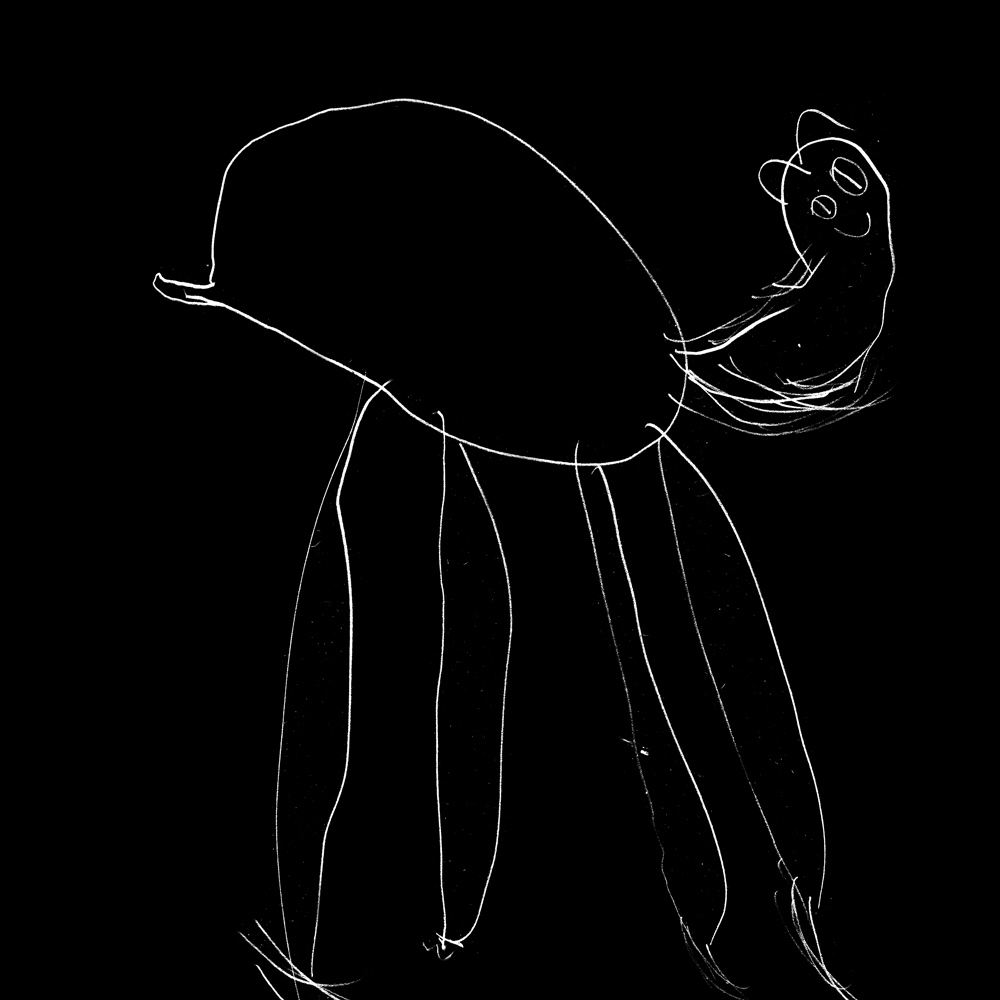
Listening range: 55 to 33,500 Hz
Vision wavelength: 430 to 539 μm
Dichromatic vision, blue and green; cannot distinguish red
360º peripheral vision
The large ears of donkeys, which move 180° independently from each other, help them to hear high frequency sounds from up to 60 km kilometres away, which are useful to detect food sources, potential predators and help solitary animals interact with one another at large distances. Their sight provides a broad visual field and efficient peripheral vision, which is adaptable to low and bright light.
Brays the donkey with his mocking bray. It is almost a laugh, a taunt, an offense. It must be because of the deafening power; its roar echoes throughout the valley. It must also be due to the tireless repetition, the cadence of the a after the i as if the world lacked round vowels, i-hà...! i-ha...!; the ridges are lengthened, the rivers sink into the lee, the pines are stunted, until the stones are softened. The voice of the donkey is geography and landscape, it sharpens the edges of the highest peaks and treads the most hidden paths of the mountains.
The donkey’s voice also caresses. The joyful beat of an imagined people, the foundations of the ruins of what this country was. An image that rages in the memory, tormented, that pierces the depths and explodes: an ebullient river, a field of rye, an era full of grain, a stone mill. That smell of animal and earth, which is the smell that centuries must make, so wide, so full, like woven baskets swelling from so many beautiful and ugly things buried inside.
The donkey’s voice is the song of the poor, of farmers and forest dwellers, a slow and humble song anchored to the ground with deep roots, austere, compacted, strong lives interwoven to places like arbored and fertile vine shoots, flourishing from nowhere, ripening from nowhere, making of itself meat, juice, wine, honey, a delicacy. The memory of an imprecise idyll that is both plentitude and hardship.
The donkey’s voice has no insecurities. It bursts in the middle of the night with all its dissonance, gutting the day from top to bottom like a sword. It grinds the water, drenches the paths. It is me, it seems to say; I am here, I can’t be any other way, I don’t want to be any other way. Hey, you who plays deaf, it seems to say; you, you ass, I see your ears.
If one day the donkey brayed, if one day we heard his laughter thundering, it’s because he watched us drive away in a car, hopeful and full of enthusiasm for the promise of a more dignified life. His eyes burned on the backs of our necks, the world stopped for a moment and the humiliating bray pierced the air. While the wheels sped along the asphalt and we got lost along the deforested paths of progress, the donkey laughed his bold bray, his melodic bray, his loving bray, like a taunt.
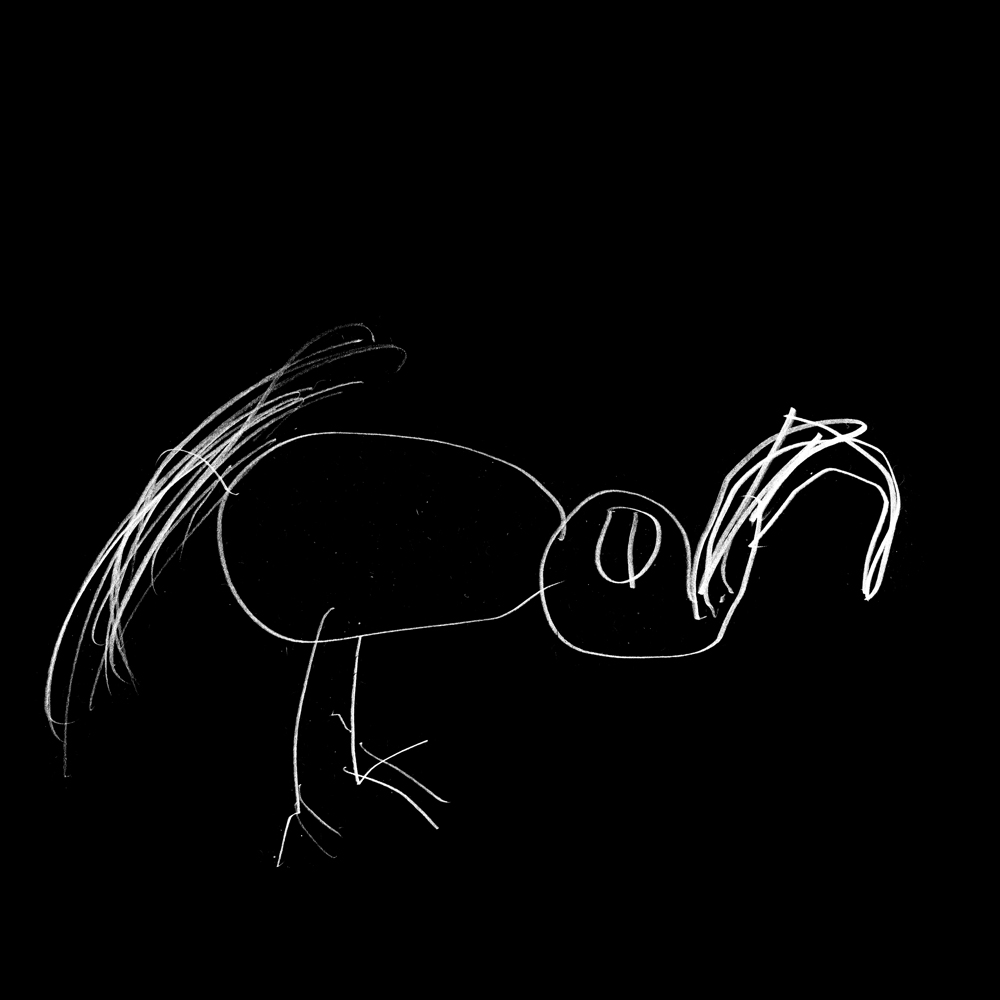
Listening range: 200 to 8,500 Hz
Vision wavelength; 300 to 400 μm
tetrachromatic vision
Highly sociable animals that live in colonies, monk parakeets have an extensive vocal repertoire consisting of at least 11 kinds of calls and vocalizations, responding to threat, alarm, flight and greeting. Like dolphins, it is believed that monk parakeets recognise the voices of individual animals and have specific dialects, which vary according to where they live.
They arrived here enslaved. Yes, my ancestors. They were kidnapped, taken out of the country and they were sold.
In the new houses they lived in cages. They missed the fruits, seeds, flowers and nectar they ate in their country. The ones here tasted different.
Those who could, escaped. With their bodies numb and atrophied from being behind bars, many died in the attempt. Others succeeded and managed to hide among the nearest trees. Some were abandoned when they got tired of them.
The older ones tell us that even if the trees were different from those they had known, sometimes it was very cold and sometimes very hot, and that there was less and less water, little by little, they got used to it. They built houses and learned to taste other seeds, other flowers, other fruits and other bugs. They came together, because when you are many it is easier not to succumb.
Today, we are a populace. We are all over the city. Humans say we are noisy, but we talk to each other, in our own language, not in the one they forced us to repeat words because they found it funny.
They also call us dirty. The same people who breathe black and foul-smelling air on a daily basis, who uproot trees and replace them with cement.
Now, for them, our life is a problem. In their books, they say that an invasive species is that which has been introduced by humans outside its natural habitat. They take you out of your land, lock you in a cage; you escape or you are abandoned and you are the invader. You mutate from pet to threat when you are no longer useful.
They say that we cause major changes in natural ecosystems, that we endanger native biodiversity.
Them. They accuse us of causing changes in ecosystems. Them, who turned so much land into a sacrificial zone to extract even the last gram of ore or the last drop of oil. Them, who have changed the rules of the game that organized all living things. Them, who call progress to breathing shit and eating plastic.
We multiply and make noise, because we want to live, because we have to bring some joy to this dirty corner where everything is measured in money. It is not noise. It is our language. We refuse to use theirs to repeat the words they want to teach us.
If you want to know more about us, ask other human beings who suffered our same destiny. Their story is also ours.
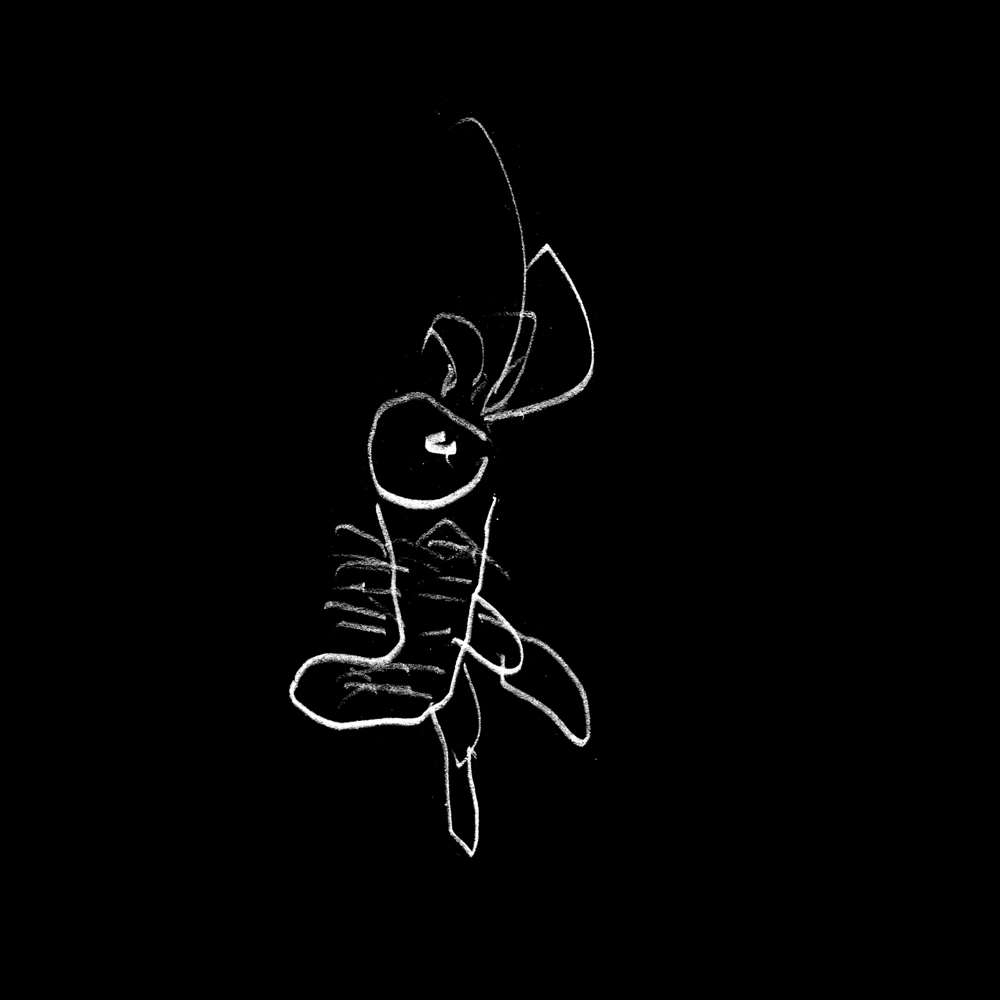
Listening: 200 to 600 Hz
Vision wavelength 300 to 650 μm
trichromatic vision
Honey bees have tympanal ears located on their front legs, which they use to detect sounds. Bees also communicate among themselves through vibrations, and are also very sensitive to vibrations in the environment, such as those caused by wind, rain, and other insects. Honey bees also have five eyes: two large compound eyes and three smaller ocelli in the centre of their head.
Fish, plants, chickens, bacteria, viruses, winds, oceans, moon, fungi and horses: it doesn’t matter if they are large or extremely small, no matter which kingdom they belong to, all living beings are minds, and minds not for themselves (thinking, sentient, able to decide what to do) but for other species. All living beings are able not only to change their environment and other species in a conscious way and to establish arbitrary relationships with other species not necessarily oriented towards any usefulness, but to change the destiny of other species. What we call nature, observed from this point of view, is an immense city in which each species plans the lives of others, and on the contrary a sort of collective cosmic mind is built, produced by an endless series of encounters and arbitrary and rational decisions, taken by different species at different times, following the most bizarre and strange intentions of each of them. The mind, the interspecific city, is the result of random encounters and ephemeral cohabitations.
Now, if each species is linked to another species like its mind, this means not only that all evolutionary development is a co-evolution (as Peter Raven and Paul Ehrlich taught), but also that co-evolution is what we normally call agriculture or breeding. Or, if you like, agriculture becomes the transcendental form of any interspecific relationship.
From this point of view, the choice of bees is not random. If you think about it, the relationship between flowers and bees is that of a strange inverted agriculture, where flowers force bees to become their geneticists, to make decisions about their genetic destiny (because it is the bees who decide who mates with who). The choice to put our mind in the life of bees is similar to the gesture of flowers. A flower, in fact, is a particular anatomical structure that puts the genetic and biological destiny of a species in the hands of another species (that of insects or other pollinating animals) or of another non-organic subject (wind, water, etc.) who then take autonomous decisions on who mates with whom, just as a breeder, a farmer, a geneticist would do. With one important difference. The decisions or the choice of the bees, about which flower to mate with which other flowers, are not based on a rational calculation but on taste. Evolution, therefore, is the result of a judgement of taste. It is the sensitive taste of one species that decides the fate of other species. This, however, means that evolution is nothing more than a fashion in nature, it is a catwalk that lasts millions of years, where one species lets other species wear new clothes. Each landscape is the equivalent of a contemporary art exhibition or fashion collection. Everything in nature is therefore artificial and arbitrary, as is every sphere of our human existence. What we call nature is just a multi-species historical art gallery, a sort of multi-species Biennale, an installation waiting to be replaced by hundreds of others. Each forest is the equivalent of a museum exhibition.
Listening: 20 to 20,000 Hz
Vision wavelength 380 to 700 μm
Vision span: 120 degrees of arc.
Trichromatic vision